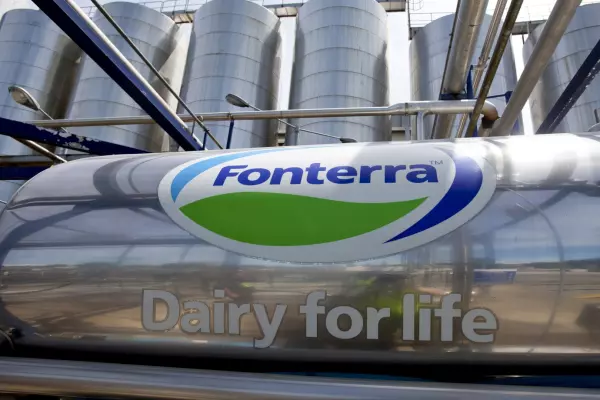BIT - Half-Year Report to 30 April 2025
HALFYR
Thu, Jun 26 2025 08:32 am
LEGAL ENTITY IDENTIFIER: 213800B9YWXL3X1VMZ69
THE BANKERS INVESTMENT TRUST PLC
(‘the Company’)
Unaudited results for the half-year ended 30 April 2025
This announcement contains regulated information
INVESTMENT OBJECTIVE
Over the long term, the Company aims to achieve capital growth in excess of the FTSE World Index and dividend growth greater than inflation, as measured by the UK Consumer Price Index (‘CPI’), by investing in companies listed throughout the world.
INVESTMENT POLICY
The following investment ranges apply:
• Equities: 80% to 100%
• Debt securities and cash investments: 0% to 20%
• Investment trusts, collective funds and derivatives: 0% to 15%
To achieve an appropriate spread of investment risk the portfolio is broadly diversified by geography, sector and company. The Manager (‘Janus Henderson’) has the flexibility to invest in any geographic region and any sector with no set limits on individual country or sector exposures and, therefore, the make-up and weighting of the portfolio may differ materially from the FTSE World Index.
The Manager primarily employs a bottom-up stock picking investment process, across four regional portfolios, to identify suitable opportunities. While each regional portfolio manager employs their own investment style, they all pay particular regard to cash generation and dividend growth over the medium term.
The Company can, but normally does not, invest up to 15% of its gross assets in any other investment companies (including listed investment trusts).
Derivatives
The Company may use financial instruments known as derivatives for the purpose of efficient portfolio management while maintaining a level of risk consistent with the risk profile of the Company.
Gearing
The Company can borrow to make additional investments with the aim of achieving a return that is greater than the cost of the borrowing. The Company can borrow up to 20% of net assets at the time of draw down.
PERFORMANCE HIGHLIGHTS
30 April 2025 30 April 2024
Net asset value (‘NAV’) per share1 121.5p 125.5p
Share price 109.6p 112.2p
Revenue return per share 1.16p 1.31p
Dividends paid or declared in respect of the period2 1.372p 1.344p
Total return performance to 30 April 2025 (including dividends reinvested and excluding transaction costs)
6 months
% 1 year
% 3 years
% 5 years
% 10 years
%
NAV1 -4.0 -1.1 14.8 49.3 129.2
Share price3 0.1 0.0 11.5 35.7 118.1
FTSE World Index4 -2.6 5.3 29.5 83.9 144.4
1 Net asset value total return per share with income reinvested and with debt at fair value, see Note 6 in the Notes to the Condensed Financial Statements
2 The first interim dividend for 2025 was paid on 30 May 2025; the second interim dividend has been declared and will be paid on 29 August 2025
3 Share price total return using mid-market closing price
4 For 10 years, the benchmark is a composite of the FTSE World Index and the FTSE All-Share Index
Sources: Janus Henderson, Morningstar Direct and LSEG Datastream
INTERIM MANAGEMENT REPORT
CHAIR’S STATEMENT
Dear shareholder,
Performance
The first half of the year has been dominated by the impact on markets of Donald Trump’s election. The positive market enthusiasm which accompanied Trump’s victory in November had evaporated by early April when he announced a swathe of much higher-than-expected tariffs on all US trading partners. My last statement highlighted that the greatest uncertainty this year would be the outcome of US tariffs. Share prices fell from their peak in February, as the new administration started discussing plans for trade tariffs on imported goods to the US market. Markets do not like uncertainty and investors sold both bonds and equities, forcing down the value of the US dollar. Performance was positive in Europe and Japan where governments are finally tackling slower growth with more reforms and increased spending plans.
Your Company has delivered a net asset value total return over the six months ended 30 April 2025 of -4.0% (six months to 30 April 2024: +17.5%) and a share price total return of +0.1% (2024: +21.5%), compared with the FTSE World Index benchmark total return of -2.6% (2024: +16.6%) over the same period. Most of the underperformance in the portfolio happened in November, following a sharp rise in US stocks associated with the new administration’s policies. Over the remainder of the period, the portfolio outperformed its benchmark, and this outperformance continued through May. The Fund Manager discusses the key drivers of performance in his report.
Revenue and financial statements
Our net revenue for the six months was £12.6 million (2024: £15.9 million), equivalent to 1.16p per share (2024: 1.31p). We expected the reduction in revenue as a result of increasing investment into growth stocks. Companies in the Technology and Healthcare sectors have significant growth opportunities and are prioritising investment spending over dividends. The expectation is that profits will accelerate over time and ultimately lead to higher dividends. In the short term, drawing down on our revenue reserves will allow maintenance of a progressive dividend.
A first interim dividend of 0.686p per share (2024: 0.672p) was paid on 30 May 2025. The Board has declared a second interim dividend of 0.686p (2024: 0.672p) per share, an increase of 2.1%, which will be payable on 29 August 2025 to shareholders on the register on 25 July 2025.
The Board’s current expectation is that the dividend for the full year will be at least 2% above the total dividend paid in 2024. This modest forecast reflects the current uncertainty in the market’s forecasts for corporate profits and therefore dividends. However, it will continue to deliver the Company’s progressive dividend policy of successive annual dividend growth which it has achieved every year over the past 58 years.
Discount management
The Company’s share price has continued to trade at a discount to its net asset value and we have taken advantage of this opportunity to buy back shares from the market. This activity is beneficial to ongoing shareholders, as shares are only purchased when they are trading at a discount, thereby enhancing shareholder value.
A total of 82,700,048 shares were bought back at an average discount of 10.2% to the net asset value in the six months ended 30 April 2025 (2024: 49,748,991 shares bought back at an average discount of 12.3%) for a total consideration of £97.1 million (2024: £53.4 million). The discount at 30 April 2025 was 9.8% (2024: 10.6%).
Outlook
The hope is that the US will agree a reasonable level of tariffs with key trading partners. However, if the ongoing uncertainty extends through the summer, this will impact growth and ultimately profits. It would be premature to write off the US stock market at this point, given further reforms could well support growth in the economy.
Simon Miller
Chair
24 June 2025
FUND MANAGER’S REPORT
Market Review
The six months to the end of April 2025 was a particularly volatile period for both bond and share prices, encompassing the presidential win by Donald Trump and the subsequent slew of new presidential orders. The US stock market rose by 5% in November, on the back of optimism that Trump would be business friendly, delivering tax cuts and policies to promote growth. This honeymoon period did not last long into the new year before worries started to arise. Markets peaked in February, then fell sharply on concerns about trade tariffs disrupting corporates and creating price inflation for consumers. The unveiling of specific country tariff rates on Liberation Day, in early April, shocked investors and was compounded by the face-off with China with their tariffs rising above 100%. Since then, markets have recaptured much of the fall, with hopes that pragmatism will prevail.
The US has called on other nations to raise their defence spending, which has spurred Germany to significantly raise investment spending on defence and energy. The promise of higher spending in Europe has supported their stock markets, although the real effect on GDP growth will be a few years into the future. Japan also performed well, as the currency strengthened and interest rates increased, supporting large sectors of the market like banks.
The policy uncertainty has driven a fear of recession, but corporate results delivered broadly in line with forecasts. While estimates for this year’s growth have been reduced, most commentators are still predicting economic and corporate profit growth for all regions.
Performance
The portfolio underperformed the benchmark during November due to lower exposure to the US market than the index and underperformance of stock selection in the US market. Since November, the asset allocation has been more favourable and stock selection has improved, although we were unable to make up all the underperformance. The best regions in absolute terms have been Europe and Japan: both rose by 5.5% in Sterling terms during the period. The Japanese stocks outperformed their benchmark index by 3%, driven predominantly by financials but Sony also put in a good performance, driven by high expectations on the gaming side of the business.
Financials generally were the largest positive contributor to relative performance. Banks have performed well as earnings are supported by interest rate hedging and expanding loan books, while cost pressure is easing through new digital offerings. Technology also performed well, driven by ongoing AI optimism although performance faded in the technology hardware sector on worries about tariffs. Healthcare and retail sectors held back performance. Valuations in the healthcare sector fell on concerns about pricing, tariffs and drug patent expiries. In the consumer sectors, rising prices have caused shoppers to prioritise their spending and to favour better value offerings, hitting margins.
Portfolio
The portfolio’s allocation to the US market was increased following the US presidential election as the market friendly Republican party claimed the victory. Even with the allocation to the US market peaking at 63%, it remained below the benchmark’s US allocation. Over the remaining months we have used the US market as a source of cash to fund the share buybacks, reducing the allocation to 60% by the period end. Gearing has been maintained at around 5% during the period, as we made sure that we were positioned for a bounce in markets. The portfolio is overweight Europe and Japan relative to the benchmark, as we feel valuations are more appealing, combined with less exposure to the challenges of rising trade tariffs.
Outlook
It is notable that share prices have recovered most of their fall this year despite any real certainty on trade negotiations between the US and their trading partners. Bringing manufacturing back to the US is likely to be impractical in some key sectors like textiles and is certain to depress margins in sectors like pharmaceuticals and technology. If tariffs end up in the 10% to 20% range, then the market is likely to move its focus to the more business friendly policies in the US, such as tax reforms and deregulation. Elsewhere in the world, economic growth is recovering from last year’s slowdown and interest rate cuts are supporting easier monetary conditions. Valuations are lower than the US and may improve as confidence in growth increases.
Alex Crooke
Fund Manager
24 June 2025
For further information contact:
Alex Crooke
Fund Manager
The Bankers Investment Trust PLC
Telephone: 020 7818 4447
Simon Miller
Chair
The Bankers Investment Trust PLC
Telephone: 020 7818 1818
Dan Howe
Head of Investment Trusts
Janus Henderson Investors
Telephone: 020 7818 1818
Harriet Hall
PR Director, Investment Trusts
Janus Henderson Investors
Telephone: 020 7818 2636
PLEASE REFER TO THE PDF TO VIEW THE FULL ANNOUNCEMENT
Neither the contents of the Company’s website nor the contents of any website accessible from hyperlinks on the Company’s website (or any other website) are incorporated into, or forms part of, this announcement.
*********************************




